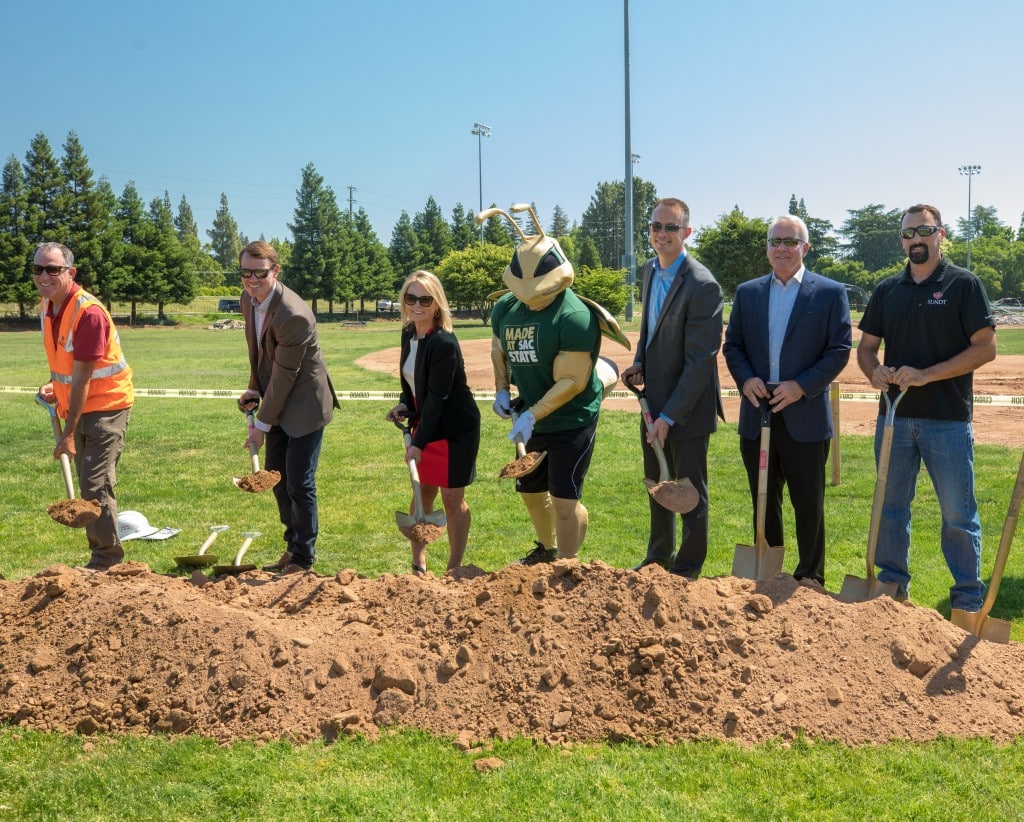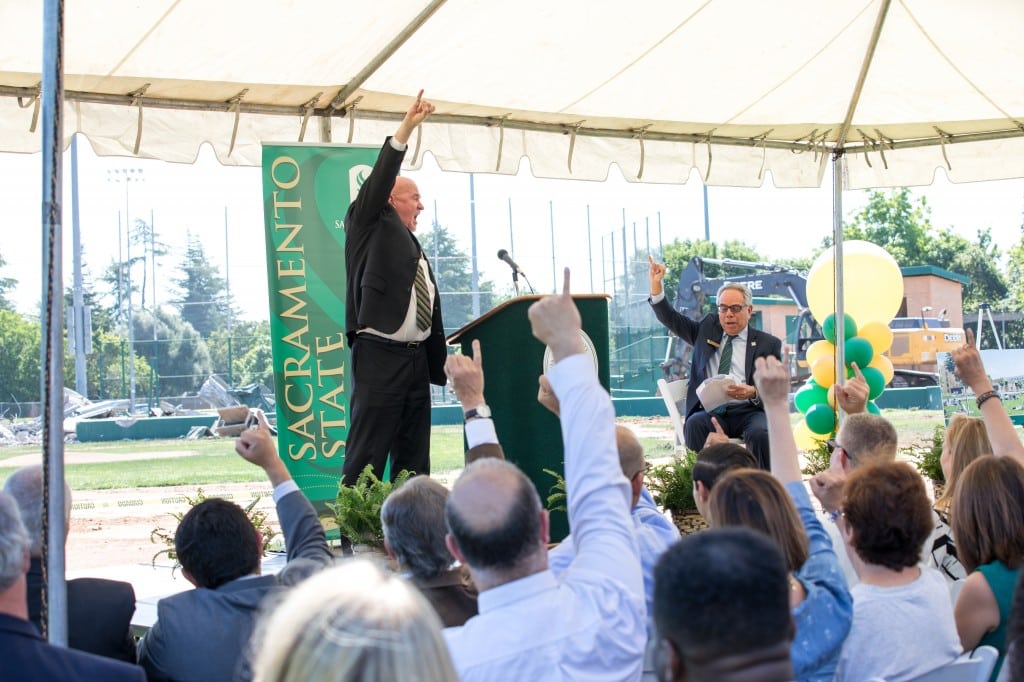What once housed hundreds of baseball fans will now house thousands of students as Sundt breaks ground on a new 365,000-square-foot student housing complex. The $150 million Hornet Commons Complex will consist of six four-story buildings with a total of 284 apartments, a swimming pool, café, fitness center and community room.
The ceremonial groundbreaking earlier this month marked the start of Sundt’s second project on the Sacramento State campus, with the Ernest E. Tschannen Science Complex finishing up within the next month. “We’re honored to be a part of this incredible project,” said Jim Larrieu, Vice President and Northern California Regional Director. “Our team is looking forward to creating a new and exciting place for students to relax and enjoy life on campus.”
This is not just another project for Sacramento State; it has been in the works for many years. Alexander Gonzalez, Sacramento State’s president for 11 years before retiring in 2015, always had a vision of turning the Dan McAuliffe Memorial Ballparks into a place to house students. Watching from the crowd as Sundt broke ground, he saw his vision come to life.
“The long-awaited Student Housing Project is transformative for the Sacramento State student community, and Sundt is thrilled to be part of the team making that happen,” said Teri Jones, Building Group President.


Sean Falvey, project manager for the new housing development and for the Science Complex project, shared his thoughts on starting a second project on campus.
With the Ernest E. Tschannen Science Complex finishing soon, what about that project do you think made us the builder of choice for Hornet Commons?
We are able to think outside the box when faced with challenges. We started off on the right foot with the preconstruction phase: our precon team was able to deliver more than the campus’s RFP requirements and really give them more for their budget. Secondly, we proved that we were not only a good contractor, but an innovative one. When we had to dig a trench that would stretch in front of the campus bookstore and impede foot traffic, our team came up with a unique solution: build a “drawbridge” to keep students and pedestrians safe while walking in and out of the bookstore. Our client appreciated us going beyond what was expected of us and keeping the students’ safety and campus operations in mind during construction.
Were there any lessons learned from the Science Complex that the team can apply to the housing project? On the Science Complex, the state fire marshal required significant changes during construction due to the many rating conditions (wall terminations, pipe penetrations, etc.). On the housing project, we’ll be constructing a mockup to demonstrate all our typical conditions, which will give us the opportunity to head off any concerns and avoid scheduling conflicts. With over 30,000 students, many of them commuters, the campus is very sensitive to traffic disturbances. Going into housing, we are paying close attention to how our work may impact traffic and have already accounted for “summer work.” The purpose of the new housing development is to, hopefully, eliminate the amount of travel students currently face.
The Science Complex is an incredible building with 27 teaching labs, research labs, a planetarium, and an observatory; will there be any similarities with the housing complex? The two buildings will be like night and day: not only is the building type different (wood vs. steel), but the client and delivery method are different as well. Even though they will be different structurally, the end goal is the same: to enrich the campus community with better facilities. The CSU students are the ones who will truly benefit from each of these projects.